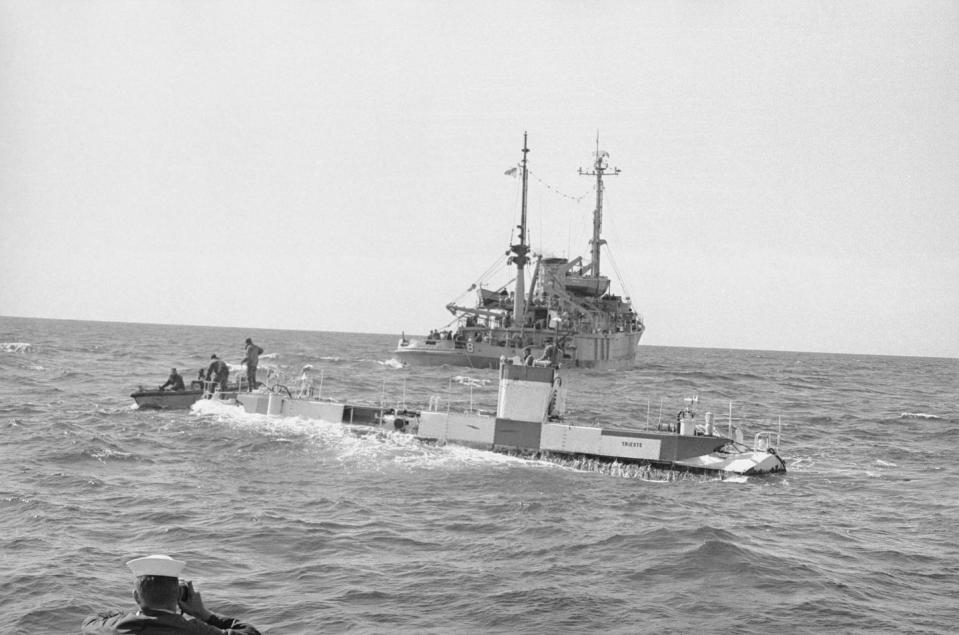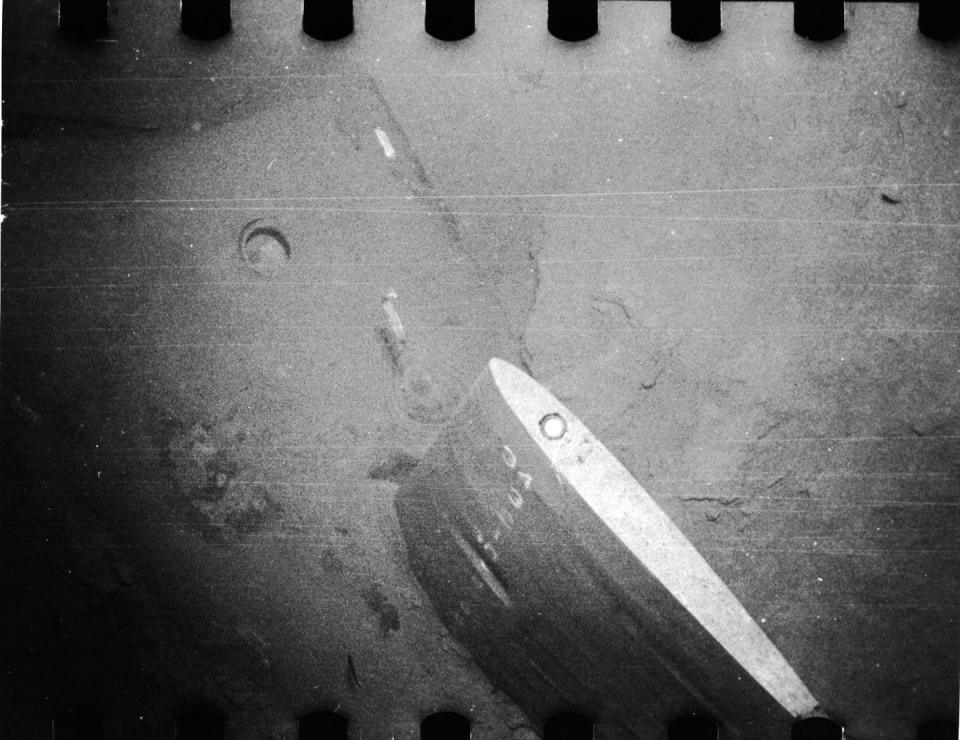New Declassified Documents Reveal the Truth About Why the USS Thresher Sank
The U.S. Navy is in the process of declassifying files related to the sinking of the USS Thresher.
The submarine sank in April 1963 during a training exercise, killing all 129 people on board.
A lawsuit forced the Navy to release files from the accident investigation.
A trove of recently declassified files on the tragic 1963 sinking of the nuclear-powered attack submarine USS Thresher confirm the U.S. Navy didn’t cover up the mysterious accident—and, in fact, there was no single event or error that caused the sub to sink.
Last year, a retired Navy submarine commander won a lawsuit forcing the service to release its report on what happened to the Thresher, which sank during diving tests in April 1963, claiming the lives of the entire 129-person crew. The Navy has since released several sets of documents that shed new light on the sinking.
➡ You love badass military tech. So do we. Let’s nerd out together.
USS Thresher was a first-of-its-class nuclear-powered attack sub. The Thresher class was only the second to use the new teardrop hull designed to maximize speed underwater; unlike conventionally powered submarines, nuclear-powered subs could stay underwater indefinitely and didn’t require an efficient hull shape for sailing on the surface.
The Threshers were also the first to use the newer, stronger, HY-80 steel alloy. The subs were 278 feet long, displaced 4,369 tons underwater, and could make more than 30 knots submerged.

On April 9, 1963, the Thresher was conducting diving tests 220 miles east of Cape Cod. The submarine notified ships on the surface monitoring the tests it was encountering “minor difficulties,” and it would blow its ballast tanks to return to the surface. Sonar technicians reported hearing mysterious “air rushing” noises, but the sub failed to surface.
The Thresher never surfaced, and the Navy later found the sub in six pieces on the bottom of the Atlantic Ocean. All 129 personnel on board, including 112 crew members and 17 civilian contractors, were killed. People have come up with many theories about how the sub sank, including blaming the faulty welds that failed during the tests, shorting out the sub’s critical electrical systems and sapping its power.
Gear We Love: The Best Inflatable Boats
The Navy’s investigation into the sinking remained classified for decades until James Bryant, a retired U.S. submarine commander who commanded three Thresher-class submarines, sued the service in 2019 to release the files. In 2020, a judge agreed with Bryant, ordering the declassification of 3,600 pages of files. U.S. Naval Institute News has uploaded many of the files online for public viewing.
While the Navy investigation blamed the sinking on a failed seawater pipe, Bryant and other naval experts believe the declassified files show several factors all came together to create the fatal accident.

According to the panel of experts, the Navy was rushing to get the Thresher into the fleet to counter a new class of Soviet nuclear submarines. An expansion of the submarine fleet created a demand for more sub-trained crews, and some suggest crews went to sea inadequately trained. The crews themselves were overconfident in the systems, believing it was impossible for nuclear-powered submarines to lose power.
The Navy officially said improperly welded piping ruptured onboard the ship, causing a seawater leak that eventually shorted out the ship’s electrical system. Crews were unable to reach equipment to stop the flooding in time, and the ballast tanks failed to work properly. Naval historian Normal Friedman believes inadequate training exacerbated these problems, with the crew unable to respond quickly enough to save the ship.

The loss of the Thresher, as well as the USS Scorpion in 1968, led to a revamping of both training and engineering practices aboard Navy nuclear submarines. The Navy also created a specialized agency, SUBSAFE, to oversee submarine design and construction to ensure that submarines could surface even under the most dire circumstances. Thanks to SUBSAFE, the Navy hasn’t lost a submarine in 52 years.
Bryant says the release of the documents is good for the Navy. For decades, critics charged that keeping the Thresher investigation files secret was part of a coverup. The contents of the files make it clear there was no actual coverup, and the Navy only kept them secret to prevent operational details of U.S. nuclear submarines from being released and benefiting adversaries.
🎥 Now Watch This:
You Might Also Like
